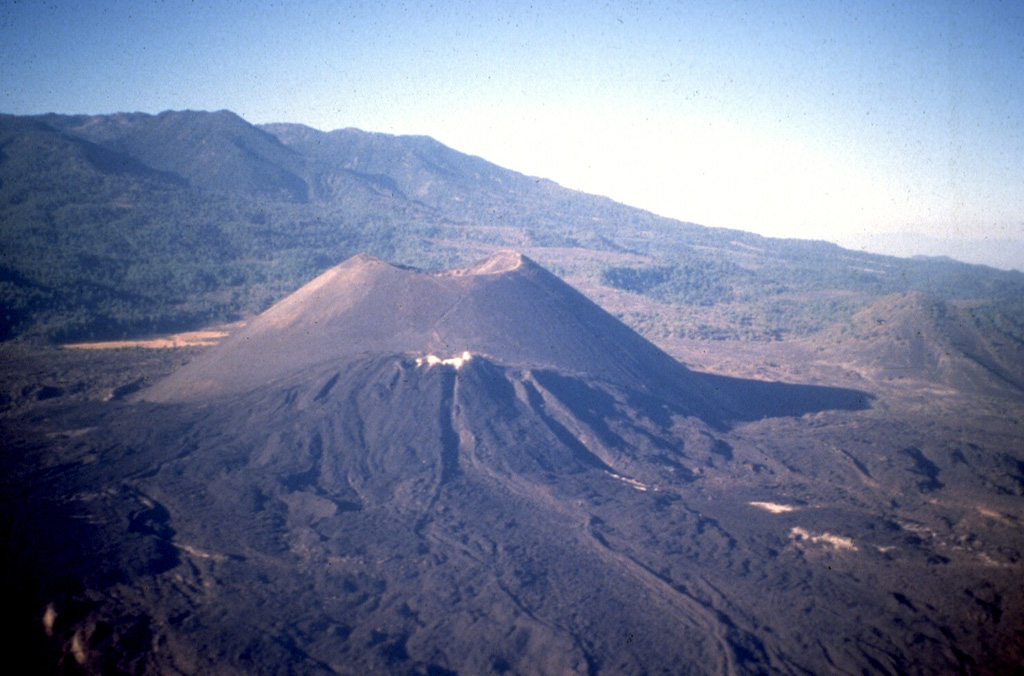Image GVP-05804

Parícutin, the volcano that grew in a cornfield in 1943, is a well-known feature of the Michoacán-Guanajuato volcanic field. The huge field contains over 1,400 vents covering a wide area across the Michoacán and Guanajuato states. Scoria cones are the predominant volcanic landform, and lava domes, maars, tuff rings, and lava flows are also present. Parícutin is seen here from the NE with the Nueva Juatita flank vent in the foreground, the main source of lava during the last five years of the eruption.
Photo by Jim Luhr, 1997 (Smithsonian Institution).
![]() This image is made available under the Public Domain Dedication CC0 license, but proper attribution is appreciated.
This image is made available under the Public Domain Dedication CC0 license, but proper attribution is appreciated.
Keywords: volcanic field | scoria cone | lava flow | vent

Michoacán-Guanajuato
